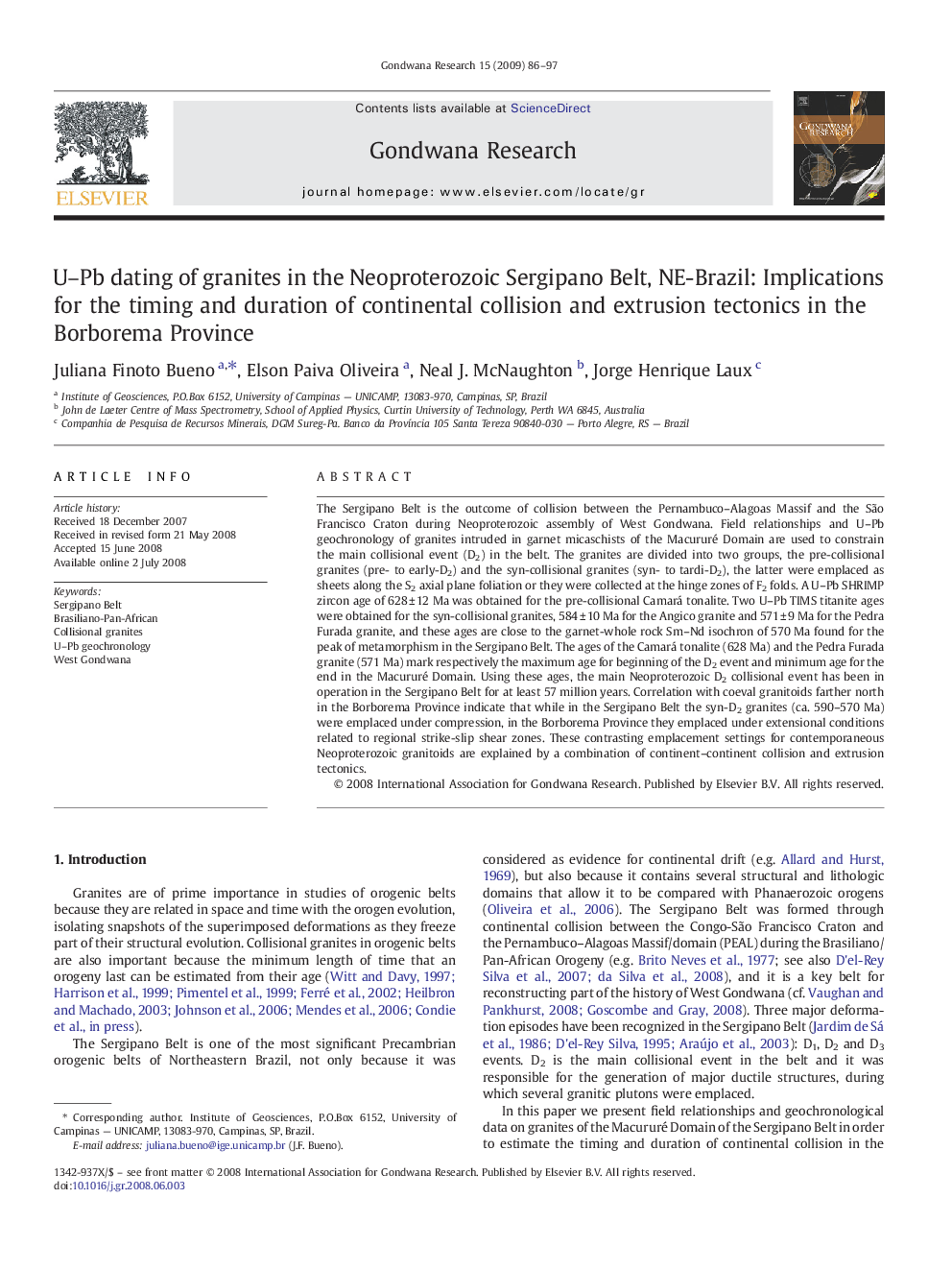| Article ID | Journal | Published Year | Pages | File Type |
|---|---|---|---|---|
| 4727931 | Gondwana Research | 2009 | 12 Pages |
The Sergipano Belt is the outcome of collision between the Pernambuco–Alagoas Massif and the São Francisco Craton during Neoproterozoic assembly of West Gondwana. Field relationships and U–Pb geochronology of granites intruded in garnet micaschists of the Macururé Domain are used to constrain the main collisional event (D2) in the belt. The granites are divided into two groups, the pre-collisional granites (pre- to early-D2) and the syn-collisional granites (syn- to tardi-D2), the latter were emplaced as sheets along the S2 axial plane foliation or they were collected at the hinge zones of F2 folds. A U–Pb SHRIMP zircon age of 628 ± 12 Ma was obtained for the pre-collisional Camará tonalite. Two U–Pb TIMS titanite ages were obtained for the syn-collisional granites, 584 ± 10 Ma for the Angico granite and 571 ± 9 Ma for the Pedra Furada granite, and these ages are close to the garnet-whole rock Sm–Nd isochron of 570 Ma found for the peak of metamorphism in the Sergipano Belt. The ages of the Camará tonalite (628 Ma) and the Pedra Furada granite (571 Ma) mark respectively the maximum age for beginning of the D2 event and minimum age for the end in the Macururé Domain. Using these ages, the main Neoproterozoic D2 collisional event has been in operation in the Sergipano Belt for at least 57 million years. Correlation with coeval granitoids farther north in the Borborema Province indicate that while in the Sergipano Belt the syn-D2 granites (ca. 590–570 Ma) were emplaced under compression, in the Borborema Province they emplaced under extensional conditions related to regional strike-slip shear zones. These contrasting emplacement settings for contemporaneous Neoproterozoic granitoids are explained by a combination of continent–continent collision and extrusion tectonics.
